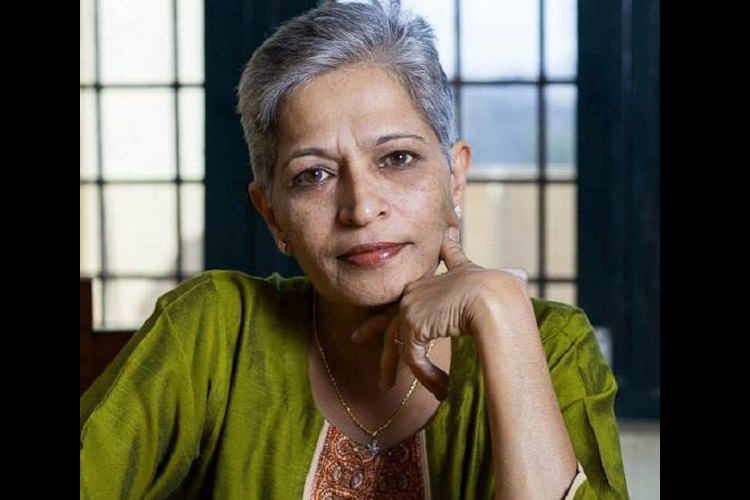In a chilling incident on September 5, 2017, senior journalist and activist Gauri Lankesh was shot dead right outside her home in the southern city of Bengaluru by unknown attackers on a bike. The seven shots fired at her left most people shocked, as it highlighted the absolute price that journalists must pay to for freedom of speech. Lankesh, a staunch and vocal critic of the ruling BJP government and of Hindu right-wing extremism, ran the Kannada language tabloid Gauri Lankesh Patrike, and was also a contributor to The Wire. Many compared her killing to that of Govind Pansare, Narendra Dabholkar and MM Kalburgi, all well-known rationalists and thinkers who dared to speak against the extremism of the Hindu right-wing.
Gauri Lankesh was afraid of no one. Who was afraid of Gauri Lankesh?
It is no secret that the government is no friend of freedom of speech and expression. Since last year itself, India has dropped three ranks in the Press Freedom Index released by media watchdog Reporters Without Borders, and is currently in the ‘difficult situation’ slot. A report compiled by The Hoot, an Indian media watchdog, released on Press Freedom Day (May 3) this year, said that 54 attacks on journalists had taken place in the last 16 months. The report said these attacks were mainly carried out by political parties and their leaders, police, and mobs resisting media coverage. According to statistics released by the The Committee for the Protection of Journalists, 24 journalists in India have been murdered for their work since 1992. About 96% of these murders remain unsolved.
Also read: Jasoosi Band Karo: Gendered Surveillance Of Journalists In Pakistan
In 2016, Gauri was convicted on defamation charges for publishing a story about BJP’s members being allegedly involved in criminal activities in her tabloid. A journalist with great integrity, Lankesh refused to reveal her sources. Even though the story had been covered by other dailies, Lankesh was personally targeted for the defamation lawsuit, believed to be due to her political opinions.
24 journalists in India have been murdered for their work since 1992. About 96% of these murders remain unsolved.
Even after her death, as most were mourning the loss of a defiant and independent voice, there were some on Twitter who were sharing positive thoughts about the cowardly act of killing her. Some felt she had it coming, some called her a ‘commie’ (slang for communist) or a Naxal. Many of them had direct or indirect links to the NDA government, one of them even followed by Prime Minister Modi.
The world of Twitter is a mirror of the way society always tries to silence opinionated women, and shows them ‘their place’. Renowned journalist Barkha Dutt, who is constantly subjected to online abuse, rape and death threats, tweeted: “This is chilling scary and outrageous. So far always took online death & rape threats with a pinch of salt. Now we must all pause & wonder.” For a country where dissent is not looked kindly upon, the dangers of being a professional journalist are doubled for women. Female journalists often face abuse and harassment on the field.
For a country where dissent is not looked kindly upon, the dangers of being a professional journalist are doubled for women.
What happened to Gauri Lankesh is a warning of the status of media in this country. But it’s also a grave reminder of how vulnerable the fourth estate is for opposing the ruling power, when they are just doing their job. As former finance minister P Chidambaram put in a tweet: “Gauri Lankesh was afraid of no one. Who was afraid of Gauri Lankesh?”
Also read: Women Journalists Are Everything People Don’t Want Them To Be
About the author(s)
Tanika Godbole is a writer/journalist based in Mumbai. She is interested in LGBT and women's rights, and is keen on writing about those topics. She also makes terribly drawn comics on human rights and pop culture. They can be found on https://www.facebook.com/godbolet/




